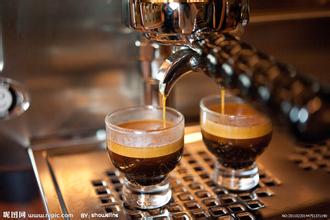The history of growing coffee beans in Vietnam-the price of G7 coffee in Vietnam
The history of growing coffee beans in Vietnam-the price of G7 coffee in Vietnam
Vietnam's geographical location is very favorable for coffee cultivation. Southern Vietnam has a hot and humid tropical climate, which is suitable for growing ROBUSTA coffee, while the north is suitable for growing ARABICA coffee. Coffee production in Vietnam has the following characteristics: (1) because there is no effective way to deal with fallen leaves, medium-grain coffee was selected as the main variety in the early 1980s. (2) based on the planting technology, the coffee planting method was determined, that is, under the hot and humid climate in southern Vietnam, high density planting, large amount of irrigation, excessive fertilization and no shading trees were used to obtain the maximum yield and give full play to the production capacity of medium-grain coffee. The per unit yield of many coffee plantations in Daklak, Gia Lai, Kontum and Dong Nai areas of Vietnam reached 340t / ha. The yield of some plantations is even as high as 89.9 tons per hectare. (3) processing technology: mainly making full use of the solar energy drying method in the dry season in the plateau of central Vietnam to process coffee.
Nhan graduated in 1967 and returned to Vietnam to start working at the PhuQuy Rainforest Agricultural Research Station (PhuQuayTropicalCropResearchStation) in Nghe. The Tropical Rainforest Agricultural Research Station, a research organization under the Department of Agriculture, went on to work with the Vietnamese government to devise plans for how to rebuild war-torn Vietnam. Vietnam had a population of about 70 million at that time and most of the people needed to work. The Vietnamese government quickly identified two main reconstruction priorities, education and work. "the government asked everyone to come up with a product that could help society grow," Nhan recalled. "I had studied all the rain forest products when I was studying in China, so I began to look for products that could be produced locally and exported. Coffee is an advantageous product because we have many countries to cooperate with, and there are a lot of basalt laterite in the country, and the only thing that is lacking is agricultural manpower. " "We also know that we need a lot of educators to rebuild the country after the war, but the question is what if young people don't want to stay in school," Nhan added. "Schools and universities continue to open during the war."
As the front line of the war moved south, Nhan began to focus on Yi'an Province in the north-central part of the country. He began to visit coffee farms left in the province during the French colonial period, and Nhan became convinced that coffee would play an important role in Vietnam's future economic growth. Nhan felt that the development of coffee beans to become high-yielding agricultural products would be the focus of social development. "We cannot rely on outsiders to help rebuild Vietnam, and we need to help create better opportunities for people of more than 70 different local tribes in the province.

Important Notice :
前街咖啡 FrontStreet Coffee has moved to new addredd:
FrontStreet Coffee Address: 315,Donghua East Road,GuangZhou
Tel:020 38364473
- Prev

What kind of coffee beans does Ye Jia Xuefei use? what does it mean?
What kind of coffee beans does Yega Xuefei use? the coffee trees were planted by monastic monks in Europe (a bit like Belgian monks growing wheat to brew beer) and later transferred to farmers or co-operatives. Yejassefi is actually constructed by surrounding coffee communities or cooperatives, including Edido Idido and Hafusa Harfu near Fog Valley Misty valley.
- Next

Katim Coffee Bean Flavor description Grinding scale Variety production area treatment method Taste introduction
Katim coffee bean flavor description grinding scale variety production area treatment method taste introduction 1. Baoshan State-owned Lujiang Farm planted 12.6 mu in March 1991, the land was unshaded and irrigated once in the dry season. The level of management and fertilization was above and above. The results in 1993 showed that the average yield per mu was 75 kg in 1993, 350 kg per mu in 1994 and 1995, 225 mu in 1995 and 1996.
Related
- Detailed explanation of Jadeite planting Land in Panamanian Jadeite Manor introduction to the grading system of Jadeite competitive bidding, Red bid, Green bid and Rose Summer
- Story of Coffee planting in Brenka region of Costa Rica Stonehenge Manor anaerobic heavy honey treatment of flavor mouth
- What's on the barrel of Blue Mountain Coffee beans?
- Can American coffee also pull flowers? How to use hot American style to pull out a good-looking pattern?
- Can you make a cold extract with coffee beans? What is the right proportion for cold-extracted coffee formula?
- Indonesian PWN Gold Mandrine Coffee Origin Features Flavor How to Chong? Mandolin coffee is American.
- A brief introduction to the flavor characteristics of Brazilian yellow bourbon coffee beans
- What is the effect of different water quality on the flavor of cold-extracted coffee? What kind of water is best for brewing coffee?
- Why do you think of Rose Summer whenever you mention Panamanian coffee?
- Introduction to the characteristics of authentic blue mountain coffee bean producing areas? What is the CIB Coffee Authority in Jamaica?

